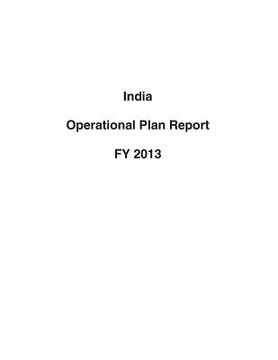Synopsis "India Operational Plan Report FY 2013 (in English)"
India has the world's third largest HIV epidemic in terms of numbers of people infected. In 2011, there were an estimated 2.1 million people living with HIV (PLWH), and 116,000 new HIV infections among adults, 14,500 new infections among children, and 148,000 AIDS-related deaths. Women account for 39% of reported HIV cases. India's epidemic is characterized by concentrated transmission and heterogeneous geographic spread. Sexual transmission is estimated to account for nearly 90% of new infections (88.5% heterosexual, 1.5% homosexual). Injecting drug use is the main mode of transmission in northeastern states, but there are also large numbers of people who inject drugs (PWID) in four of India's biggest cities, and significant pockets in smaller cities. The relatively low overall HIV prevalence (0.27% of a population of over 1.2 billion) masks the actual magnitude, as well as substantial variance by district, state, and region, including higher prevalence in some rural communities. India's epidemic is driven by infections among Key Populations, which in India include men who have sex with men (MSM), female sex workers (FSW), transgendered individuals, and PWID. Single male migrants and truckers have been identified as behaviorally vulnerable to HIV, and also serve as bridge populations facilitating HIV transmission between Key Populations and lower-risk, often rural populations. HIV prevalence is 2.7% among FSWs, 4.4% among MSM, 7.1% among PWID, and 8.8% among transgendered individuals. Size estimates of Key Populations in India indicate that there are about 868,000 FSW, 412,000 high-risk MSM, and 177,000 PWID. The geographic focus of new infections is shifting in India, with some low-prevalence states showing troubling increases in new infections over the past two years. Of the 116,000 estimated new infections among adults in 2011, 31% were from the six high-prevalence states (Andhra Pradesh, Karnataka, Maharashtra, Manipur, Nagaland, and Tamil Nadu). Ten low prevalence states accounted for 57% of new infections (Bihar, Chhattisgarh, Gujarat, Jharkhand, Odisha, Punjab, Rajasthan, Uttarakhand, Uttar Pradesh, and West Bengal). REDACTED

